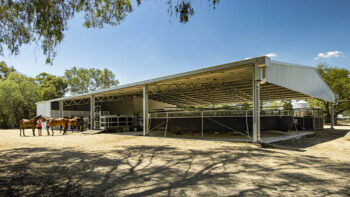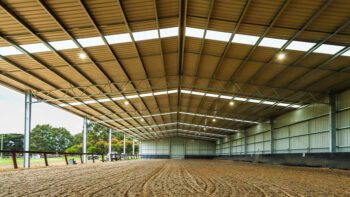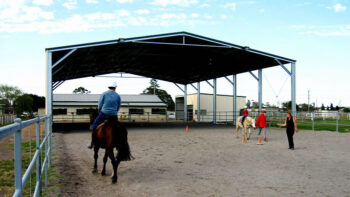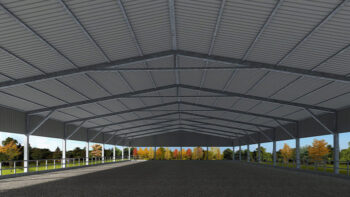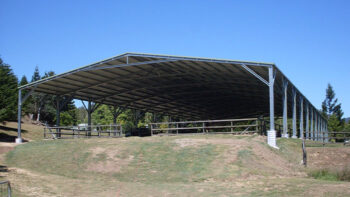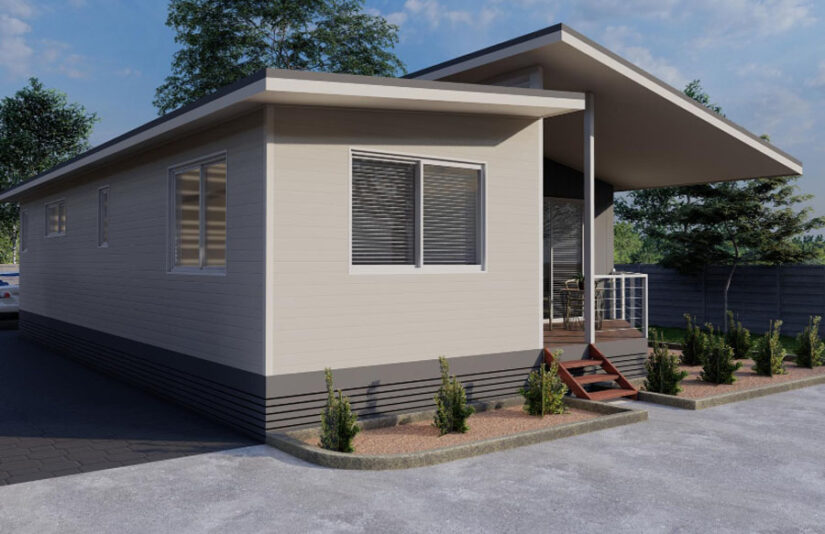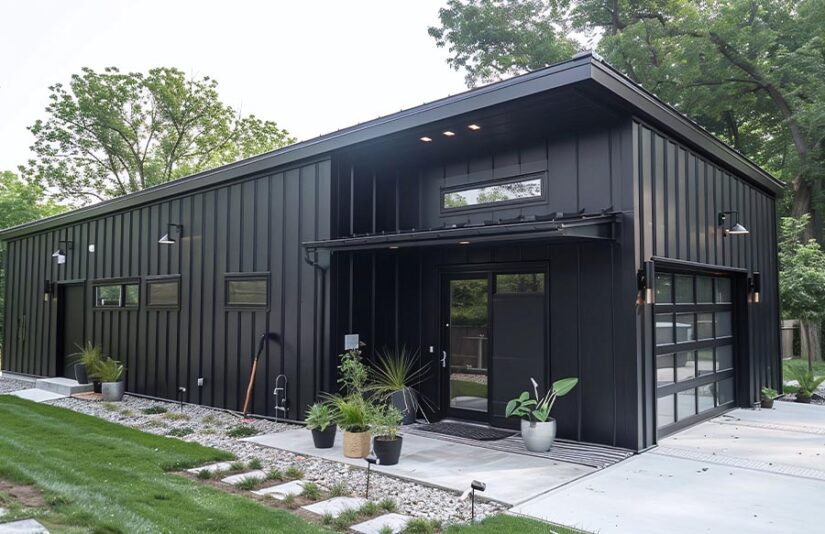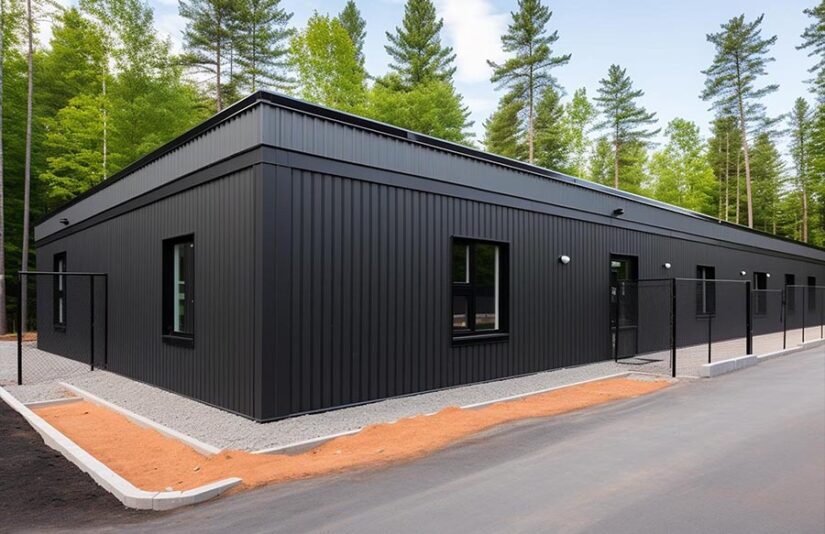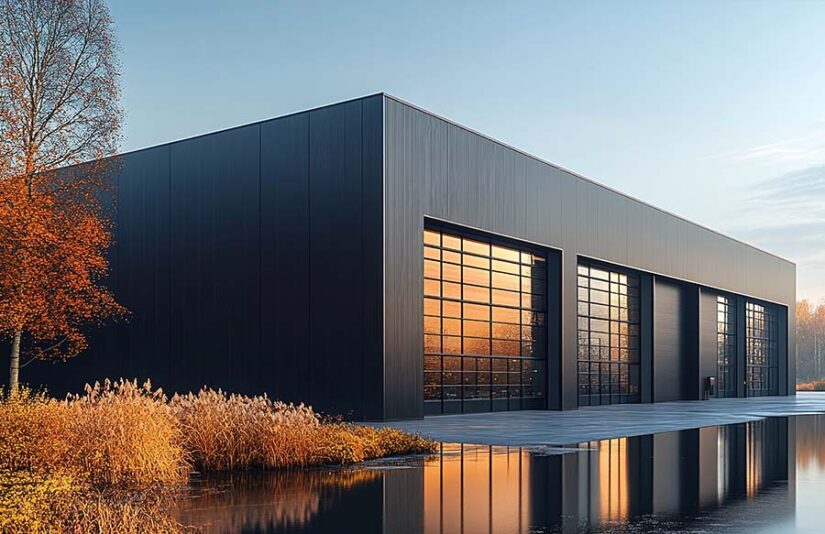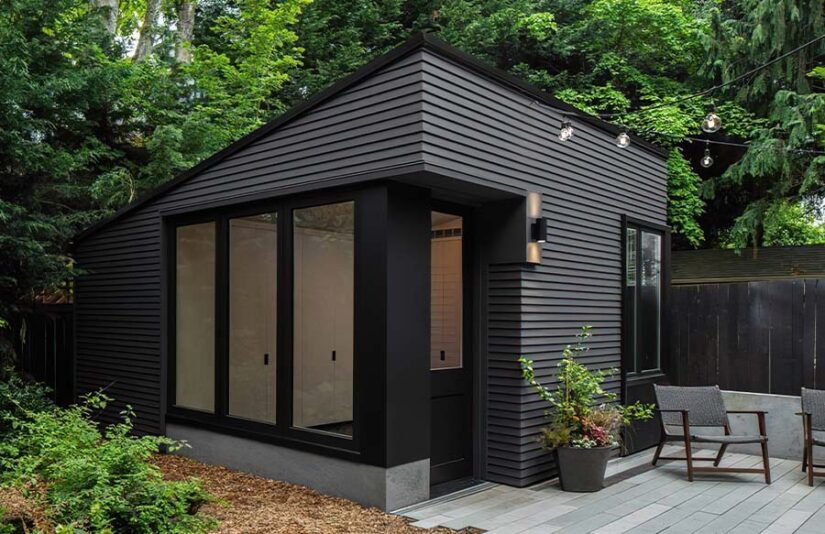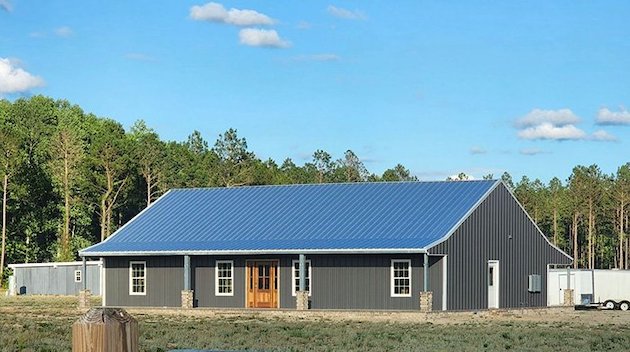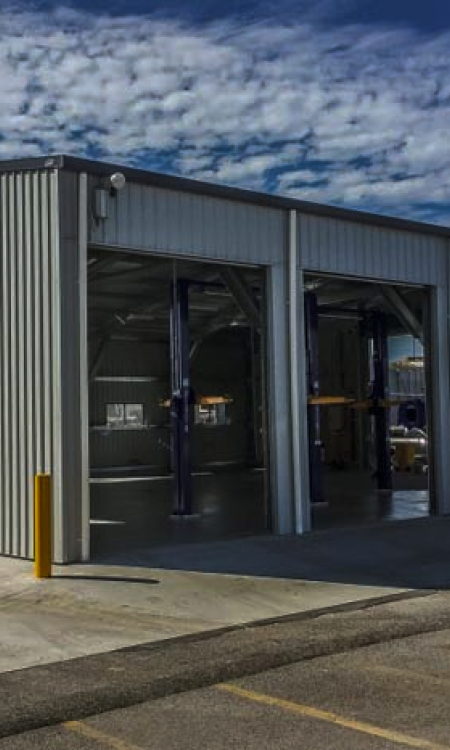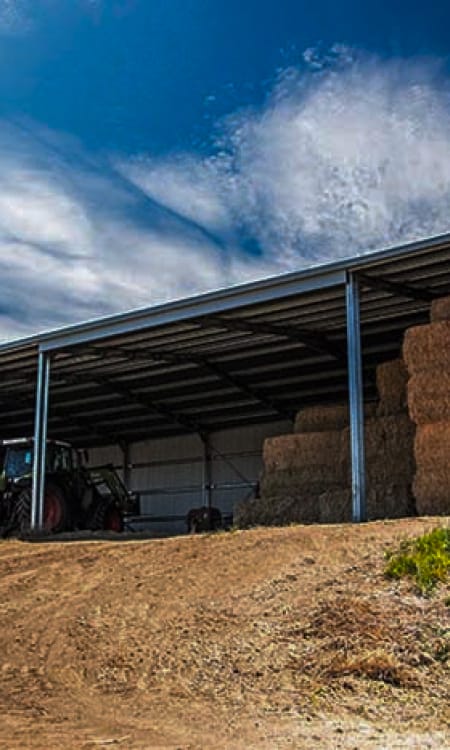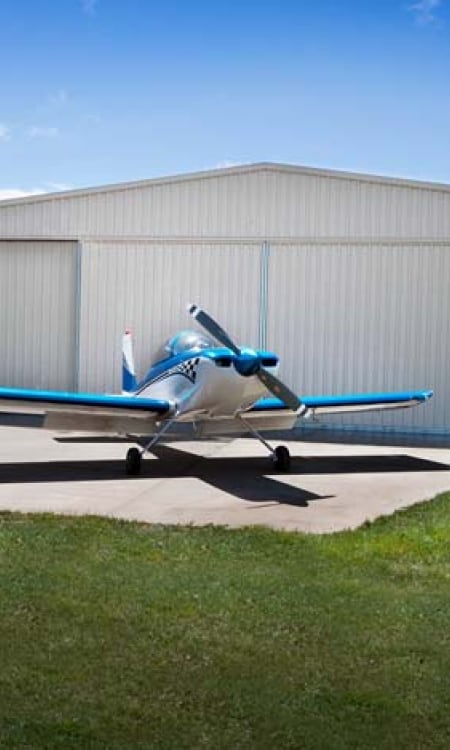A well-constructed riding arena is more than just a practice space – it’s an investment in performance, safety, and year-round usability. Whether you’re running a commercial equestrian facility, training competitive riders, or simply riding for pleasure, the choice of building material for your arena matters. That’s why more riders are choosing steel riding arenas.
At US Patriot Steel, we specialize in building durable, climate-adapted, and fully customizable horse arenas designed for long-term use in all weather conditions.
Get A Free Custom QuoteWhy Build a Steel Riding Arena?
When it comes to creating a reliable training or competition space, not all building materials are equal. Wooden arenas, while traditional, are prone to warping, pest damage, and high upkeep costs. Fabric-covered arenas can provide temporary shelter, but they often deteriorate quickly, leaving you exposed to tears, fading, and collapse under the pressure of snow or wind. Steel, on the other hand, delivers a level of durability and consistency that far surpasses these alternatives. It provides a safe, stable environment that minimizes long-term maintenance and maximizes usability. Choosing steel means investing in a structure that withstands the demands of daily riding, protects horses and riders, and offers peace of mind for decades to come. Instead of worrying about repairs or weather-related setbacks, you can focus on training, competition, and the enjoyment of riding in a space built to last.
Key Features to Include in Your Horse Arena
A riding arena isn’t one-size-fits-all. Here are critical components to consider when designing your steel structure:
1. Footing-friendly base
Crushed stone or engineered sand base to support proper drainage.
2. Kick-wall protection
Steel framing with plywood or composite panels around the base.
3. Ample lighting
LED fixtures or skylights for early morning or evening rides.
4. Ventilation systems
Ridge vents, sidewall louvers, or fans to reduce humidity and dust.
5. Spectator viewing areas
Optional lean-tos or seating bays for clinics and events.
You can also design for specialized disciplines, like barrel racing, show jumping, or reining, with tailored dimensions and entry points.
Indoor vs. Covered Arenas
Not every riding arena requires four walls to be effective. The right design depends on climate, budget, and how you plan to use the space. Fully enclosed indoor arenas provide the greatest level of protection and are especially valuable in northern regions where snow, wind, and freezing temperatures can interrupt training schedules. These arenas allow year-round riding without compromise, creating a consistent environment for both horse and rider.
In warmer or more humid areas, however, a covered arena can be the better option. By offering only a roof and partially open sides, it delivers shade and shelter while allowing natural ventilation to keep the air moving and reduce heat buildup. The advantage of steel construction is that it can easily accommodate either format and even evolve over time. A covered arena today can be enclosed later if your needs change, giving you long-term flexibility without the cost of starting from scratch.
Durability That Withstands the Elements
A riding arena must perform in every season and withstand the extremes of local weather. Steel buildings are uniquely equipped for this challenge because they are engineered with regional loads and environmental pressures in mind. In northern states, the roof and framing can be designed to carry heavy snow without risk of sagging or collapse. Along coastal areas and in the South, structural reinforcements provide the strength needed to endure hurricane-force winds.
Unlike wood or fabric coverings, steel panels are not affected by constant sun exposure or high humidity, which means they resist fading, warping, and mold growth. With galvanized coatings and sealed fasteners, corrosion is kept at bay, even in damp climates. The result is a structure that continues to perform year after year with minimal upkeep, giving riders and horse owners confidence that their arena will remain safe and reliable for decades.
Designed for Your Riding Discipline
No two riding disciplines are the same, and that means no two arenas should be identical either. Dressage riders, for example, depend on precise rectangular layouts – most commonly 20 by 40 meters or 20 by 60 meters – that allow for accurate tests and consistent training. Western pleasure and reining call for larger arenas with wide turning radiuses, often around 100 by 200 feet, so that horses can move fluidly through patterns without restriction.
Jumping arenas place an emphasis on generous clearance and broad, open layouts that provide space for course design and safe landings. Barrel racing, on the other hand, benefits from speed-friendly footing and wide entry points that let horses accelerate and turn at high speeds without risk. With steel construction, these requirements can be met in full detail.
We work closely with you to adjust ceiling height, wall reinforcements, entry design, and lighting so that your arena not only supports your chosen discipline but enhances performance and safety.
Flooring and Footing Considerations
The quality of your footing affects both rider safety and horse performance, making it one of the most important aspects of arena design. A strong foundation begins with a carefully graded base, often created from compacted stone or screenings, that establishes stability beneath the surface. Proper drainage is equally critical, since excess water can quickly turn an arena into an unusable space.
Systems such as French drains or a subtly sloped subgrade ensure that moisture is directed away, preserving consistent footing throughout the year. On top of this base, the choice of riding surface comes into play. Washed sand provides a classic option, while rubber crumb and modern synthetic blends offer additional cushioning and dust control.
Each footing material has its own balance of grip, resilience, and maintenance needs, allowing riders to select the blend that best matches their discipline. To further enhance comfort and safety, steel arenas can easily incorporate features like overhead sprinklers, ceiling fans, or misting systems that keep dust under control and regulate temperature during intense summer heat.
Cost-Effective, Long-Term Investment
While a steel riding arena may involve a larger initial investment than a pole barn or fabric dome, the long-term value is undeniable:
- Lower insurance premiums due to fire resistance
- Minimal maintenance and no repainting
- Structural warranties of 20+ years
- Fewer repairs from storm or pest damage
Many clients find that steel’s reliability more than pays for itself in reduced downtime and upkeep costs.
Quick Construction Timeline
Because all our steel arenas are prefabricated, delivery and assembly are faster than traditional stick-built structures. With proper site prep, most arenas can be completed in a matter of weeks, not months.
We coordinate with local contractors and code enforcement to streamline permits and inspections.
Add-Ons and Expansions
One of the best features of steel horse arenas is their adaptability. Future upgrades are easy to integrate, such as:
- Attached stables or tack rooms
- Side lean-tos for hay or tractor storage
- Viewing lofts or lounges
- Roll-up doors for easy equipment access
This flexibility makes steel the ideal choice for growing operations or future event hosting.
Ready to Design Your Custom Riding Arena?
From small private arenas to full-scale commercial facilities, US Patriot Steel delivers unmatched quality and design support every step of the way.
Get a Free Quote from US Patriot Steel and let’s build the riding arena you and your horses deserve.
Get A Free Custom QuoteFrequently Asked Questions
In many cases, a permit is required before construction can begin. Requirements vary by location, so it’s important to check with your local authorities.
Installation time depends on the size of the structure and the amount of site preparation needed. Smaller projects can be completed relatively quickly, while larger or more complex builds may take longer.
It’s possible, but unless you’re experienced, we recommend our pros for safety and quality.
Our barns can be insulated and snow-load rated. We build for all climates.
The cost of a metal barn varies based on several factors, including the size, design, and additional features you choose. Customization and site conditions can also influence the final price.

